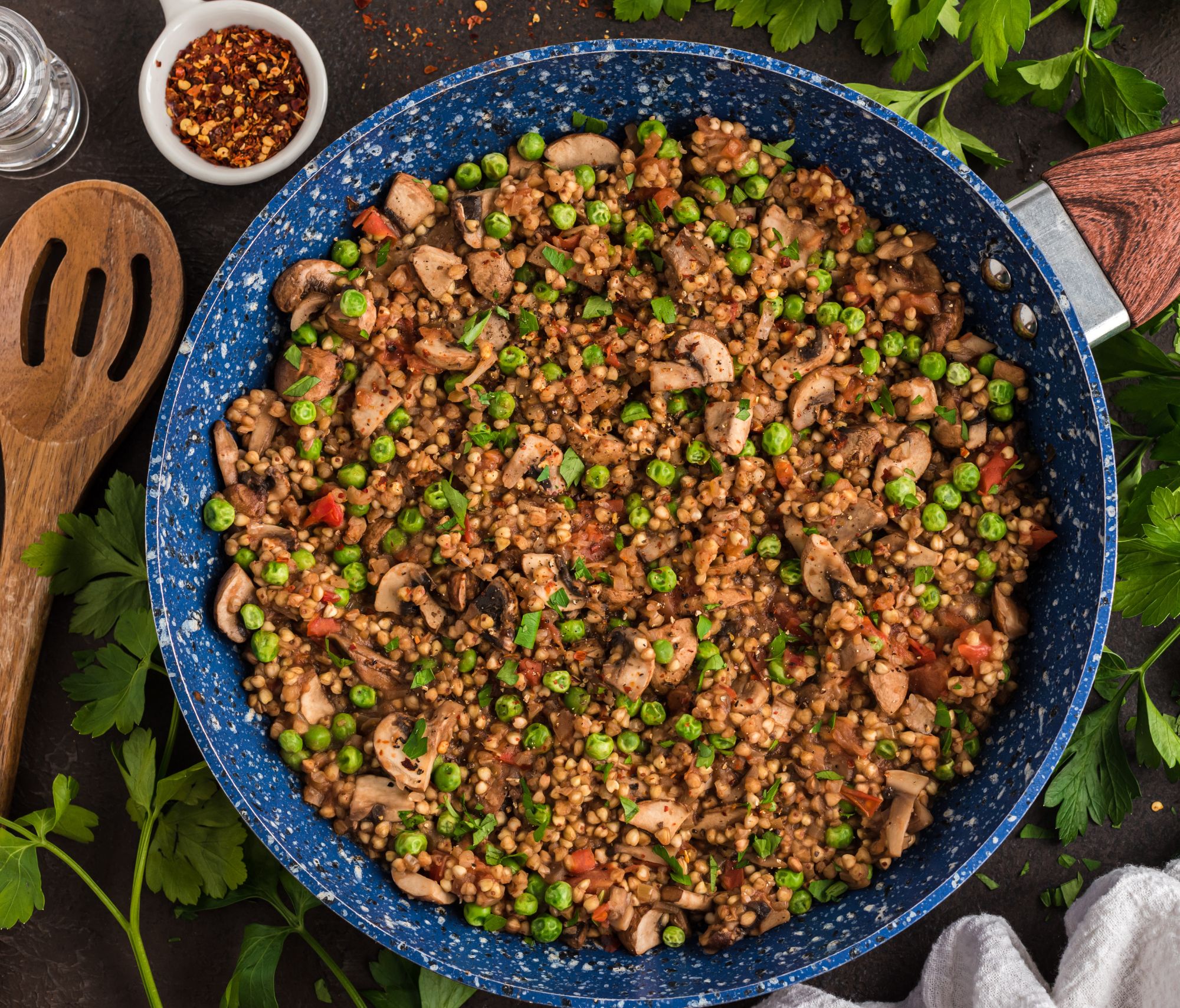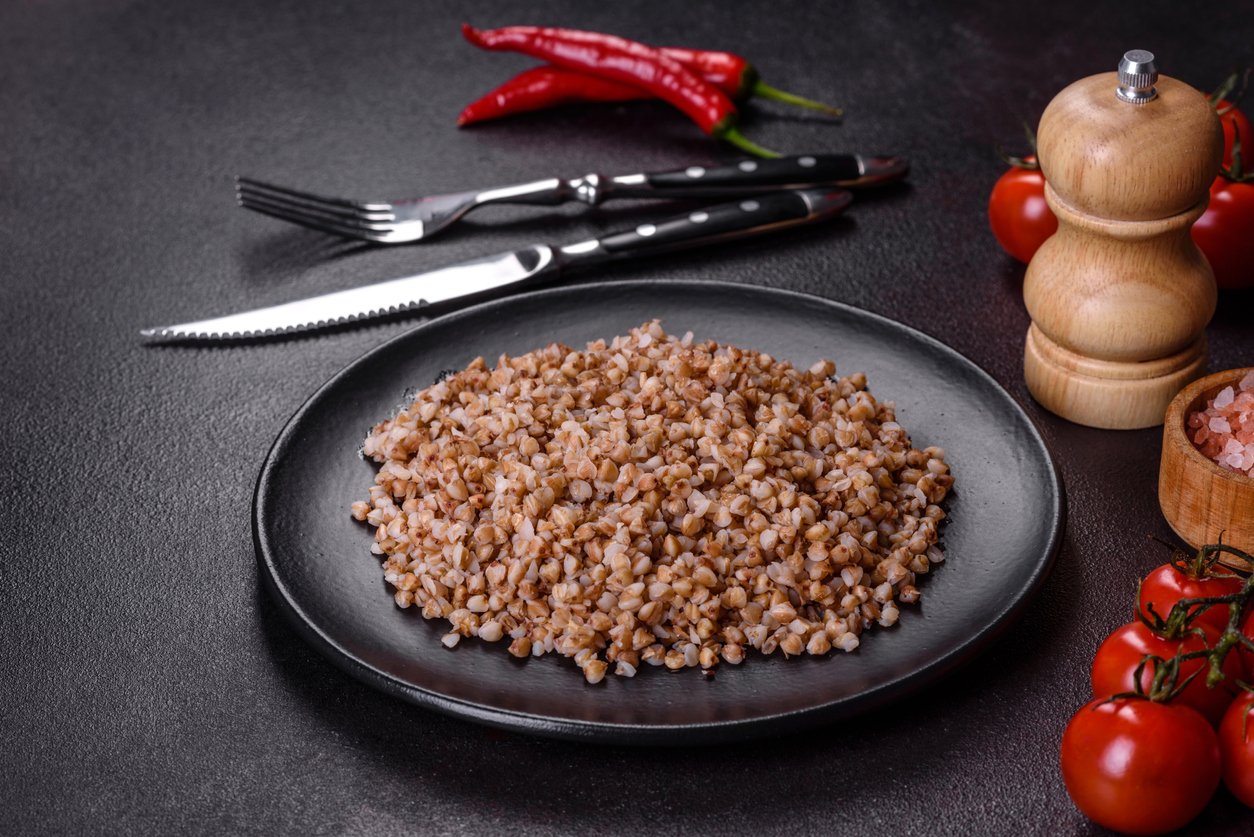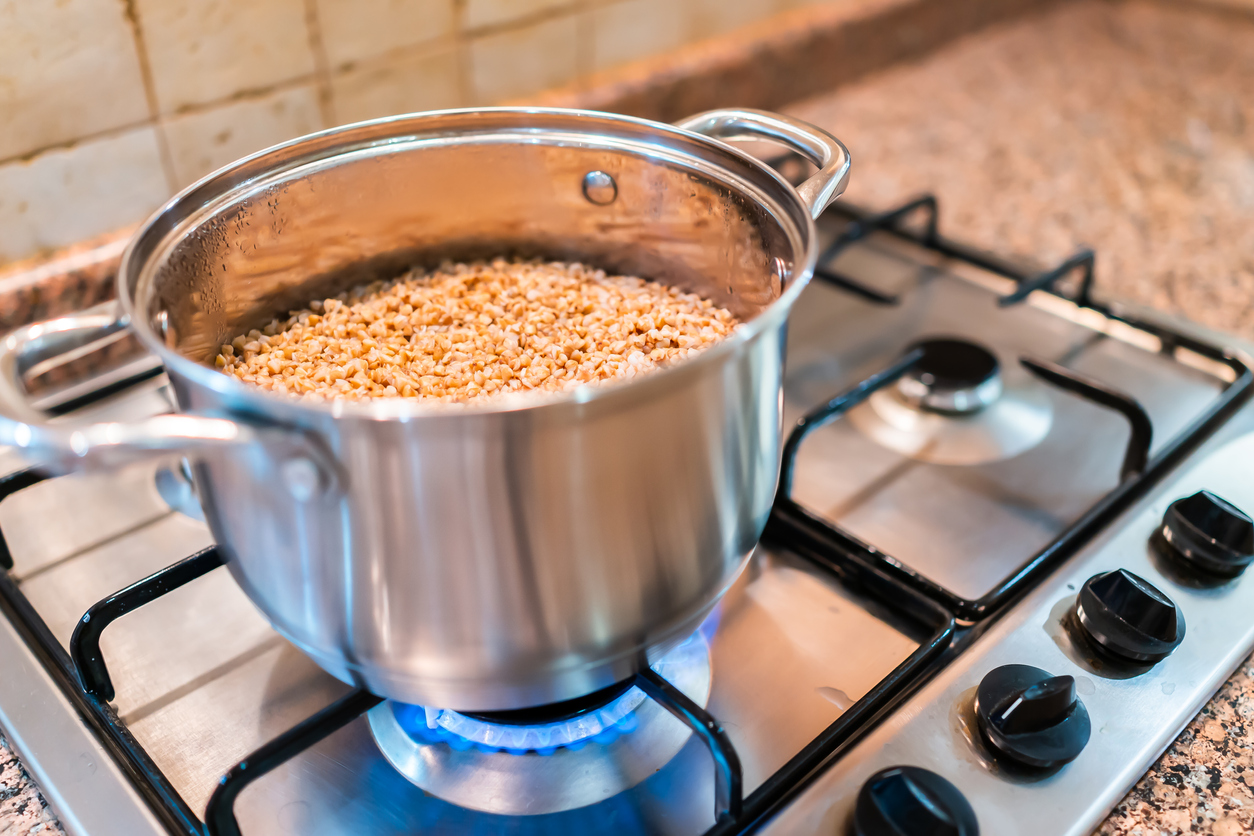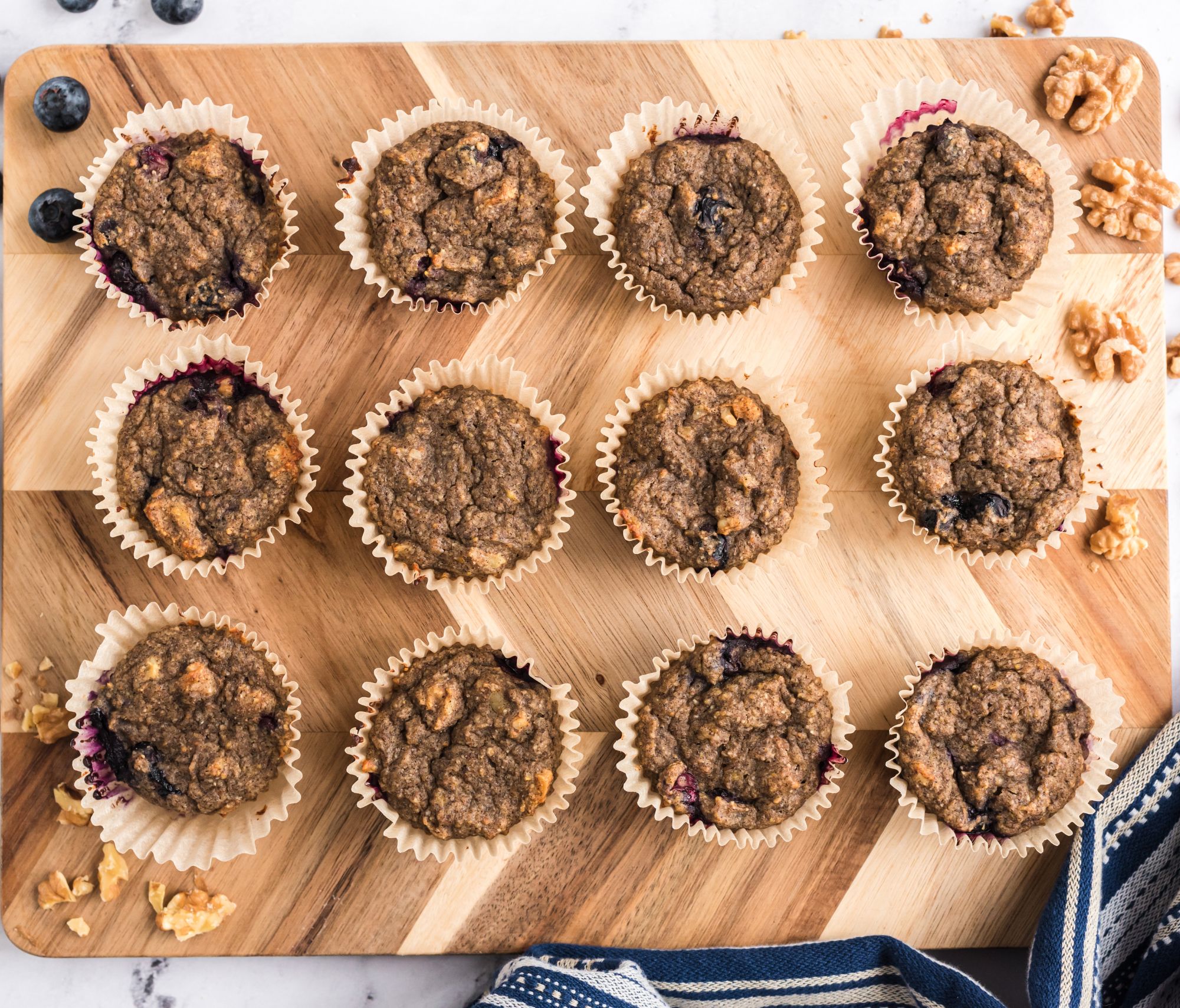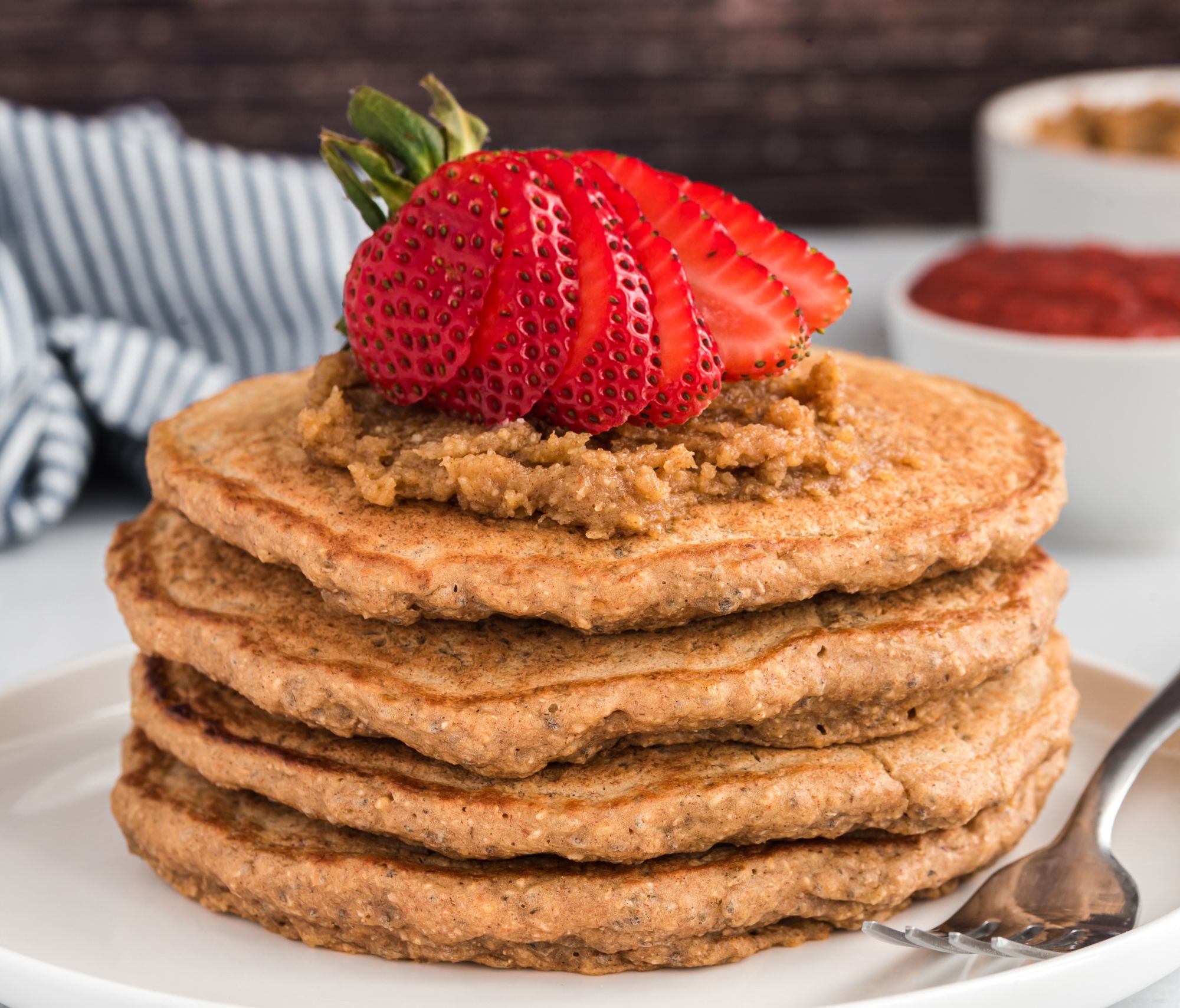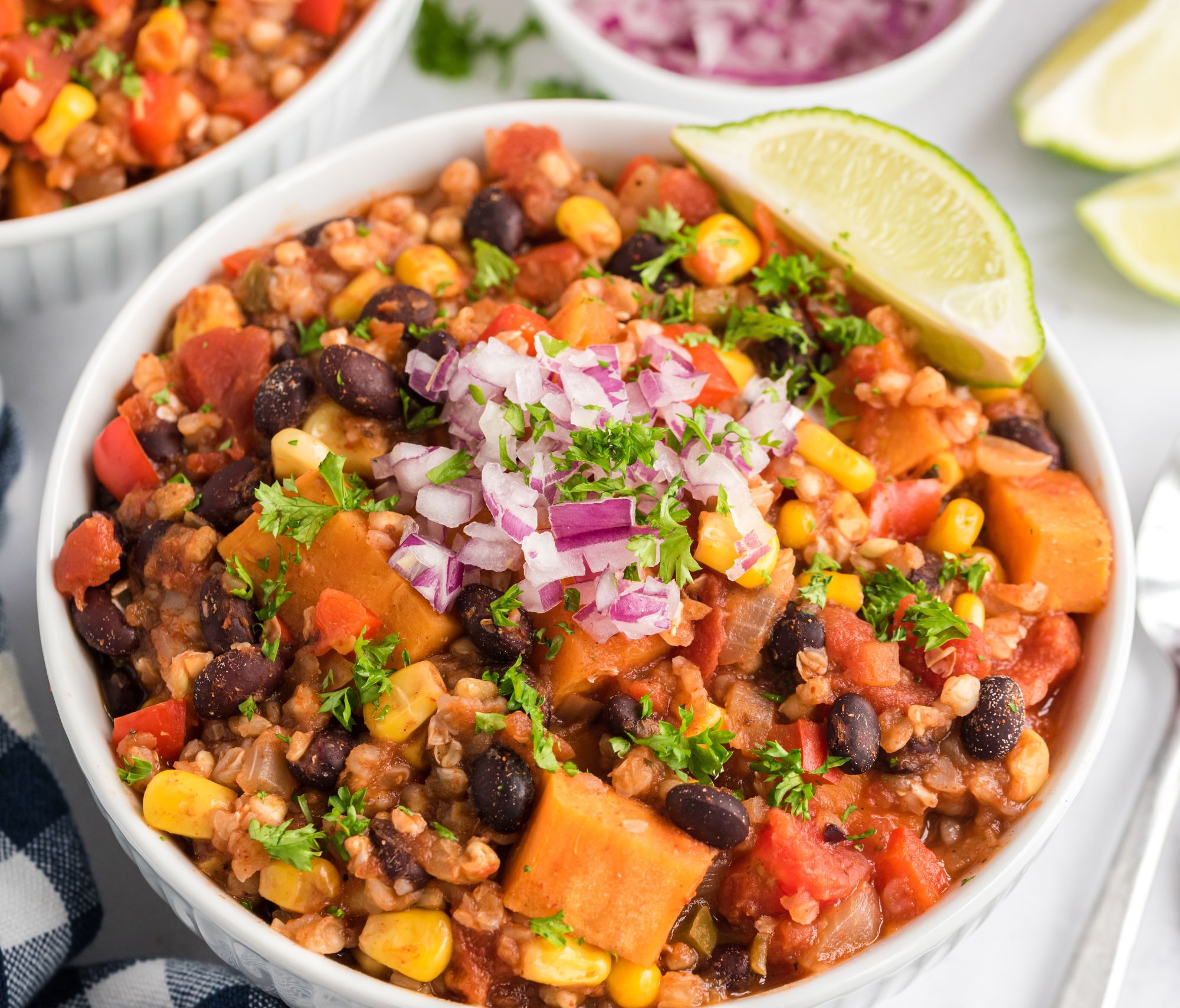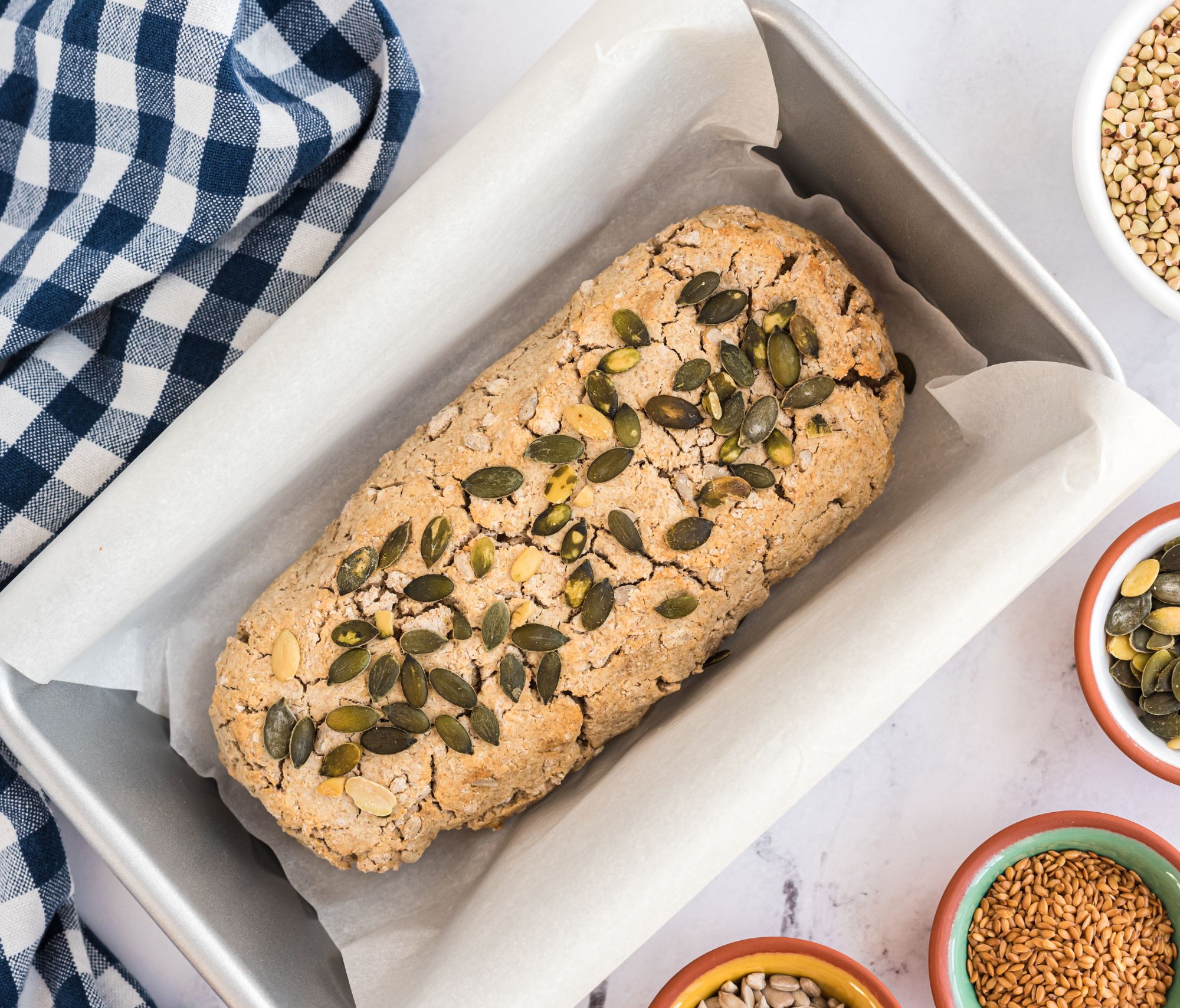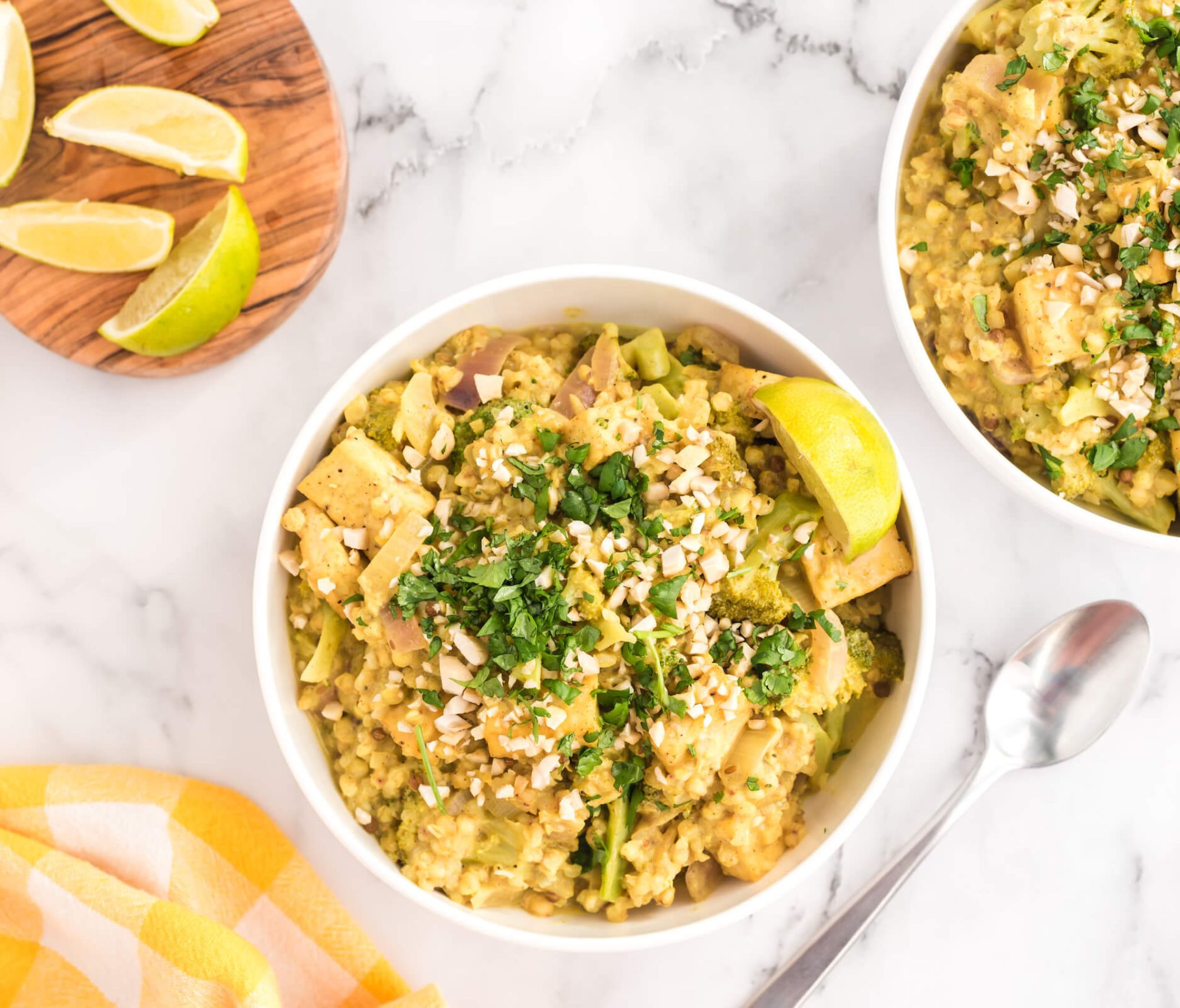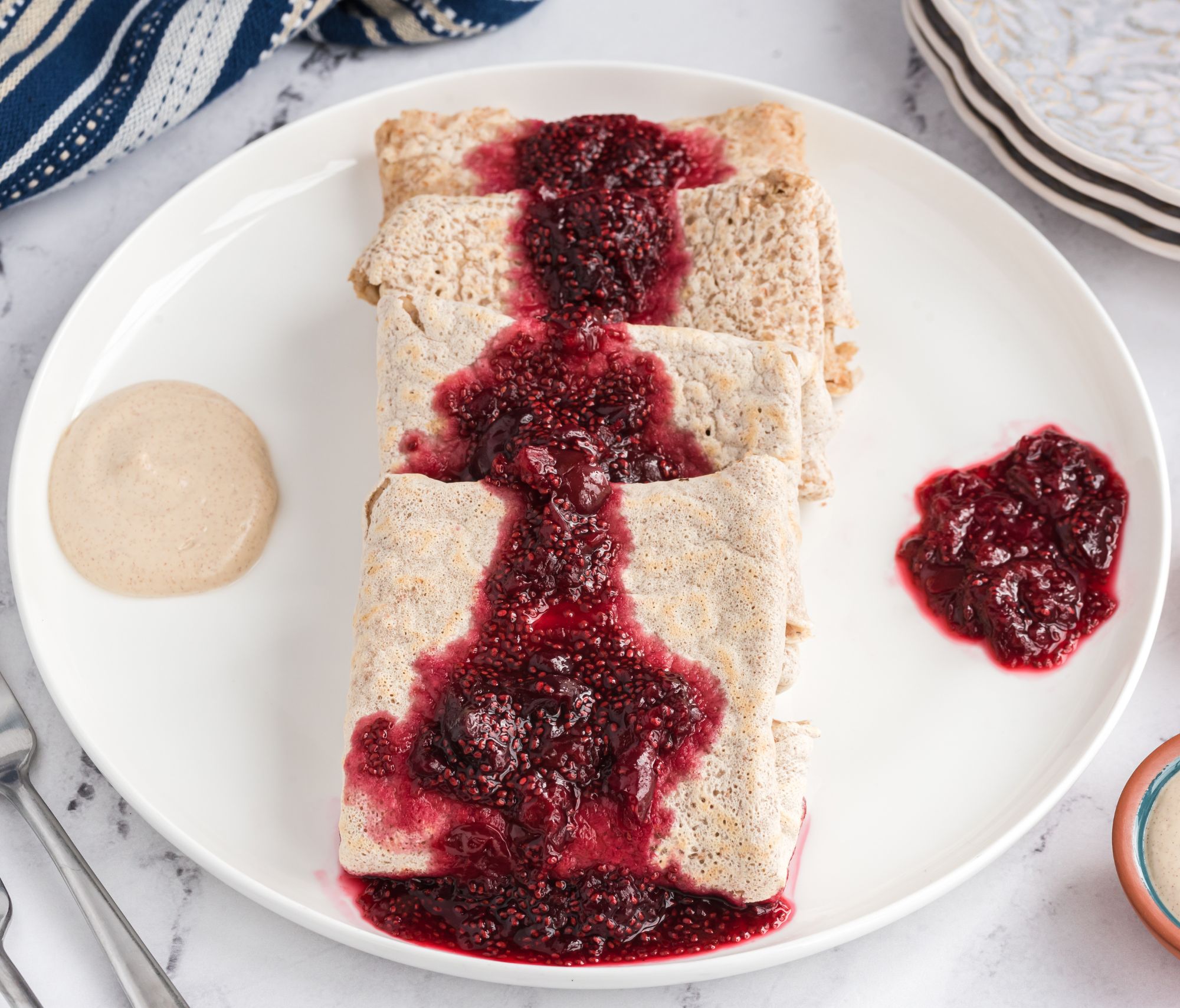If you crave a hearty addition to meals like soup, salads, or stir-fries, buckwheat is an inexpensive, versatile, and easy-to-prepare whole grain option. The name “buckwheat” is a bit of a misnomer, though, since the grain is surprisingly not from the wheat family. In fact, buckwheat is technically not even a whole grain. It’s a pseudograin often included amid whole grains because of its nutritional profile and similar culinary uses.
One of the most common ways to eat whole grain buckwheat is groats, which are the hulled seeds of the plant. Buckwheat groats have culinary applications in both sweet and savory dishes. And they’re an excellent option for those with celiac disease or gluten sensitivity since buckwheat is gluten-free.
You can also find a variety of food products made with buckwheat flour, including noodles, breads, and crepes, especially in Asian and European cuisines. Japanese soba noodles are made with buckwheat flour; pizzoccheri, a buckwheat flour pasta dish, is a staple in northern Italy; and buckwheat crepes are as French as the Eiffel Tower. But if you’re new to all things buckwheat, you may need an introduction to all it has to offer.
In this article, we’ll cover why you might want to keep buckwheat in your cooking. You’ll also get tips on how to cook buckwheat and use it in recipes, including seven healthy plant-based buckwheat recipes to get you started.
Why Eat Buckwheat?
It’s tempting to stick with classic pantry staples you know and love when adding a whole grain component to your recipes (I’m looking at you, rice or oats!). There’s certainly nothing wrong with sticking to the tried-and-true if you enjoy them.
However, there are also benefits to occasionally switching up the foods in your diet. Eating a diversity of foods (especially those high in fiber) is good for your gut health. And experimenting in the kitchen may not only boost your confidence in the kitchen, but it may even have brain health benefits.
But buckwheat deserves its time in the spotlight (and in your recipes) for its own specific health benefits and nutritional value, too.
Buckwheat has a fair amount of all nine essential amino acids, making it an excellent source of plant-based protein. It also contains several vitamins and minerals, including manganese, magnesium, phosphorus, niacin, zinc, folate, and vitamin B6.
This little pseudograin also contains high levels of resistant starch, making it excellent for your gut health and a satiating and prebiotic food. Since the microbes in your gut impact several aspects of long-term health — including immunity, metabolism, energy, hormone balance, and respiratory function — buckwheat’s gut health benefits are a rather significant selling point!
Perhaps most impressive are buckwheat’s antioxidant benefits, which may help prevent chronic diseases such as cancer, type 2 diabetes, and hypertension. Buckwheat has some of the highest amounts of the flavonoid rutin — likely one of the main reasons for its disease-fighting superpowers.
Do You Need to Soak Buckwheat?
Unlike many true whole grains, you don’t need to soak raw buckwheat groats. In fact, you can simply toast buckwheat groats and toss them into salads for some added crunch, flavor, and nutrition. That said, some people still prefer soaking buckwheat for 20–30 minutes to break down the phytic acid content, making it more digestible and its minerals more bioavailable.
Soaking your buckwheat even longer may help to bring out even more nutrition. Some raw foodies enjoy soaking buckwheat groats for up to 48 hours to sprout them before eating. One study even showed that the phytonutrient rutin, found in buckwheat, increased ten-fold after 48 hours of soaking.
If you decide to soak your buckwheat, add the groats to a bowl with roughly 3–4 times the amount of water. Then soak them overnight in the fridge, and rinse them under running water to make them less sticky once they’re done soaking. If you just want to remove buckwheat’s slightly bitter flavor before cooking, rinse the buckwheat groats in a fine mesh strainer under cool running water until the water turns clear.
How to Cook Buckwheat
Unlike some whole grains that require long soaking and cooking times before they tenderize, buckwheat is relatively quick and easy to make. To cook one cup of dried buckwheat groats, use two cups of water. (Note: Use ¼–½ cup of water if you’ve soaked the buckwheat overnight. If using a pressure cooker or rice cooker instead of a stovetop, add 1 cup and 1½–2 cups, respectively.) These amounts should yield about four cups of cooked buckwheat.
Place the pot of buckwheat on the stove and bring to a boil. Once boiling, reduce to medium heat. Stir the buckwheat consistently, and cook until all the water is absorbed. If using dry groats, the cooking time will be approximately 20 minutes (soaked groats require only 3–5 minutes). Remember to stir the buckwheat periodically every few minutes. Expect only 5–6 minutes of cook time if using a pressure cooker and 30–40 minutes for the rice cooker.
Allow the buckwheat to cool for 10 minutes before fluffing with a fork and enjoying. Then stir in the seasonings of your choice. You can also add some freshly chopped aromatics like onion, garlic, or shallots to the cooking liquid if you’re aiming for a savory buckwheat. To save time when adding buckwheat to soups or stews, cook the buckwheat groats in the broth instead of cooking them separately.
Tips for Using Buckwheat in Recipes
Are you convinced and ready to fall in love with buckwheat? Hooray! Before you get started, let’s cover a few more essential tips for using buckwheat in recipes. If you’re craving something sweet, buckwheat’s smooth, soft texture and earthy, nutty flavor make it a fantastic alternative to oats or wheat as a breakfast option. Just top it with your favorite fruit, seeds, and plant milk of choice, and you’ll have a delicious breakfast that will fill you up and keep you satisfied.
If you’re craving a savory meal, you can use buckwheat instead of rice, quinoa, farro, or other whole grains in stir-fries, grain bowls, or casseroles. You can also add buckwheat to soups, stews, or salads to make them heartier and more nourishing.
Note: When shopping for buckwheat, try to choose organic groats since testing has found residue of the harmful chemical glyphosate present in nonorganic buckwheat.
While the whole food form of buckwheat is most nutritious, if the chewy texture of buckwheat groats isn’t for you, consider using minimally processed buckwheat flour. As mentioned before, buckwheat flour is a well-loved ingredient in a number of different cuisines. And you can use it to make a variety of delicious recipes, such as noodle dishes, pancakes, bread, and crepes.
7 Delicious Plant-Based Buckwheat Recipes
Buckwheat is a fantastic whole food ingredient that works in a variety of sweet and savory recipes. Try buckwheat for breakfast in our Blueberry Buckwheat Breakfast Muffins, Fluffy Buckwheat Chia Pancakes, or Cherry Vanilla Crepes; as the grain base of choice in our Buckwheat Sweet Potato Chili, Buckwheat Tofu and Broccoli Curry, and Buckwheat Risotto with Mushrooms and Peas; or try your hand at making a versatile gluten-free bread with our Three-Seed Fermented Buckwheat Bread recipe. No matter which buckwheat dishes you choose to try, we hope you come to love this hearty and nourishing grain as much as we do.
1. Blueberry Buckwheat Breakfast Muffins
Buckwheat’s savory flavor is extra delicious in these moist, fluffy, and naturally sweet Blueberry Buckwheat Breakfast Muffins. Both the blueberries and walnuts add to buckwheat’s own antioxidant power from their anthocyanins and vitamin E, respectively. You’ll also get an extra boost of fiber from the prebiotic-rich flax meal and banana mixed in. Enjoy these nutrient-dense muffins in the morning or any time of day!
2. Fluffy Buckwheat Chia Pancakes
These Fluffy Buckwheat Chia Pancakes are rich in essential nutrients like magnesium, zinc, folate, and vitamin B6. Aside from an impressive nutritional profile, their light texture, mild sweetness, and whole food ingredients showcase buckwheat in a whole new light. Enjoy a stack of fluffy, gluten-free flapjacks topped with fruit and your favorite nut or seed butter as a hearty and healthy way to start your day.
3. Buckwheat Sweet Potato Chili
Our Buckwheat Sweet Potato Chili is a comforting bowl of plant-based protein so delicious you’ll be thinking up new ways to enjoy this delightful pairing again. Buckwheat groats offer a chewy, hearty texture that’s both irresistibly satisfying and cozy all at the same time. The best part is this dish only requires some light chopping before throwing all the ingredients in a slow cooker and waiting for your feast to finish!
4. Three-Seed Fermented Buckwheat Bread
Transform buckwheat flour into a delicious Three-Seed Fermented Buckwheat Bread with just a handful of steps. Get ready to shout out “YUM!” to the rooftops, after you try this deliciously moist bread with crunchy seeds and a slightly sour taste from the fermentation process. It takes a little patience while the fermentation does its magic, but the end result is absolutely worth the wait. Is there anything buckwheat can’t do?
5. Buckwheat Tofu and Broccoli Curry
This tasty Buckwheat Tofu and Broccoli Curry recipe is a savory way to get creative with buckwheat groats. Hearty, satisfying, and invigorating thanks to the plant-based protein, chewy buckwheat, and potent curry sauce, this dish delivers flavor, texture, and nutrition that is out-of-this-world good.
6. Buckwheat Risotto with Mushrooms and Peas
Buckwheat creates a delicious risotto with the perfect amount of chewiness as it’s simmered down with mushrooms, veggie broth, and spices. Enjoy the decadence and nutrition of this flavorful Buckwheat Risotto with Mushrooms and Peas whenever you are craving a warm and nourishing bowl of savory grains with a satisfying burst of creamy flavor.
7. Cherry Vanilla Crepes
From fluffy pancakes to their wafer-thin French cousins, buckwheat does it again with these sweet Cherry Vanilla Crepes. Slightly tart cherries combined with vanilla cashew cream inside a nourishing buckwheat crepe might be the definition of foodie heaven on earth.
Enjoy Buckwheat!
Buckwheat is an underrated yet highly nutritious and versatile grain that works in its whole food form in a variety of dishes including soups, bowls, and salads. Or you can use buckwheat flour to create healthy noodle dishes and baked goods.
Because buckwheat pairs well with either sweet or savory flavors, buckwheat recipes work any time of day — breakfast, lunch, or dinner. Use this gluten-free pseudocereal instead of oats, rice, quinoa, or other whole grains for a new twist on your favorite meals. Now that you know how to cook and use buckwheat, consider adding these healthy buckwheat recipes to your meal rotation.
Tell us in the comments:
-
Have you used buckwheat before?
-
What’s your favorite way to cook buckwheat or other whole grains?
-
Which healthy buckwheat recipe are you most excited to try?
